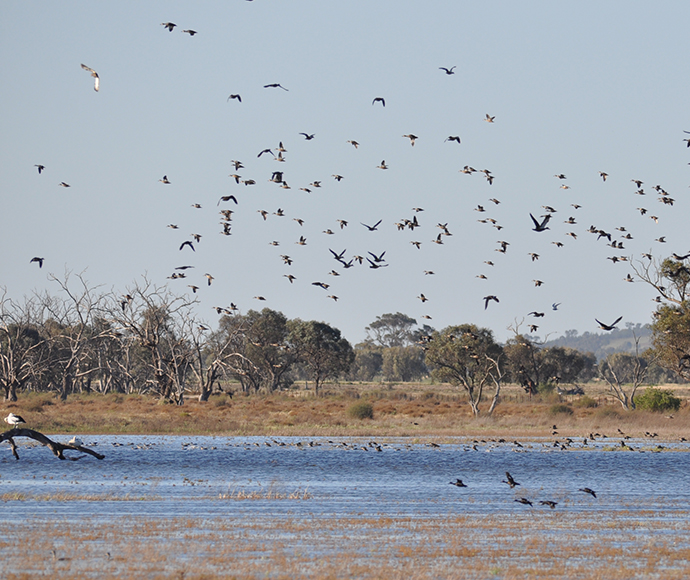Fivebough and Tuckerbil swamps are on Crown land near Leeton in the Riverina region of New South Wales.
Fivebough Swamp is a permanent but fluctuating shallow wetland. Its water content is fresh-brackish. Tuckerbil Swamp is a seasonal shallow wetland. Its water content is brackish-saline.

Fivebough and Tuckerbil swamps became a Ramsar site in 2002.
Why these wetlands were listed as a Ramsar site
Countries that sign up to the Ramsar Convention can nominate sites to be listed as Wetlands of International Importance (Ramsar sites). The site must meet at least one of 9 internationally accepted criteria.
The 2 swamps were listed as a Ramsar site in 2002 because they meet the following criteria.
Criterion 2: Threatened species or ecological communities
Fivebough and Tuckerbil swamps support more than 1% of the estimated south-eastern Australian population of the Australasian bittern.
Criterion 3: Populations of plants and/or animals important for maintaining biodiversity of a particular bioregion
The swamps are important for maintaining a high diversity of waterbird species within the Riverina. The number of migratory bird species listed under international agreements and the abundance of some waterbird species are among the highest recorded in the Murray–Darling Basin.
A total of 83 species of waterbirds have been identified at Fivebough Swamp and 69 species at Tuckerbil Swamp.
Criterion 4: Supports species at a critical stage of their life cycle or provides refuge in adverse conditions
Fivebough Swamp is a significant drought refuge, because part of it retains water all year round. It is also an important site for migratory waterbirds and provides important feeding habitat for four species of egret.
Both swamps provide breeding habitat for waterbirds, with 22 species observed breeding at Fivebough Swamp and 11 species at Tuckerbil Swamp. Tuckerbil Swamp is also an important flocking area for the brolga, which is endangered in New South Wales.
Criterion 5: Regularly supports 20,000 or more waterbirds
The swamps have regularly recorded populations of over 20,000 waterbirds, with counts of glossy ibis and whiskered tern at Fivebough Swamp being the highest recorded for Australia.
Criterion 6: Supports 1% or more of the population of waterbird species
Glossy ibis, sharp-tailed sandpiper, whiskered tern, Australasian bittern and brolga have all been recorded at these swamps in numbers estimated to be greater than 1% of their populations.
How the site is managed
Management of this Ramsar site is guided by the following:
- the site’s Ramsar information sheet
- an advisory committee for Crown Lands NSW, which manages Fivebough and Tuckerbil swamps
- a plan of management that is currently being updated.
Threats to the Ramsar site
The main threats to this site’s ecological character include:
- agricultural production, including livestock grazing and cultivation
- flood mitigation
- disposal of treated sewage effluent
- weeds and introduced vegetation
- urban and industrial development.